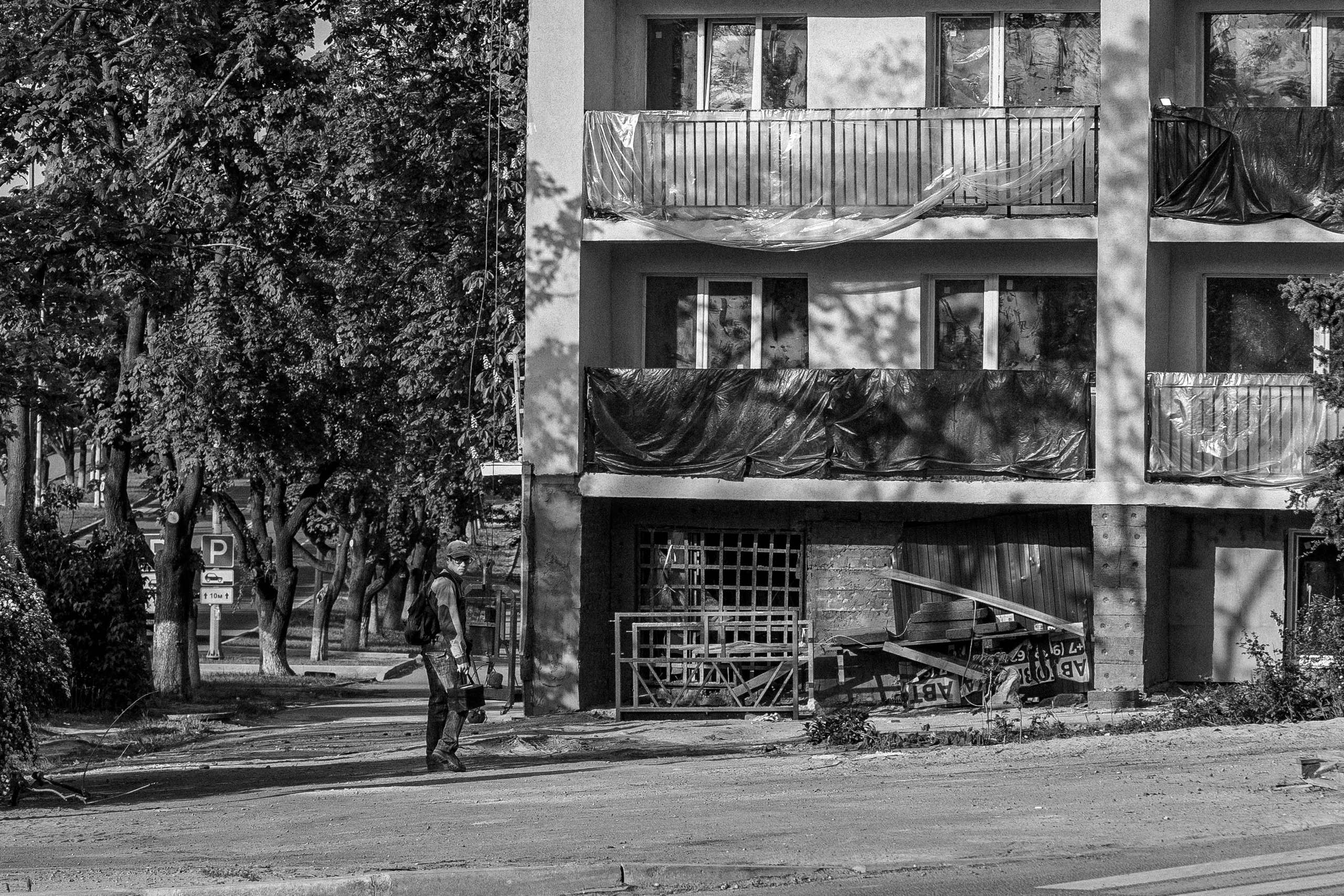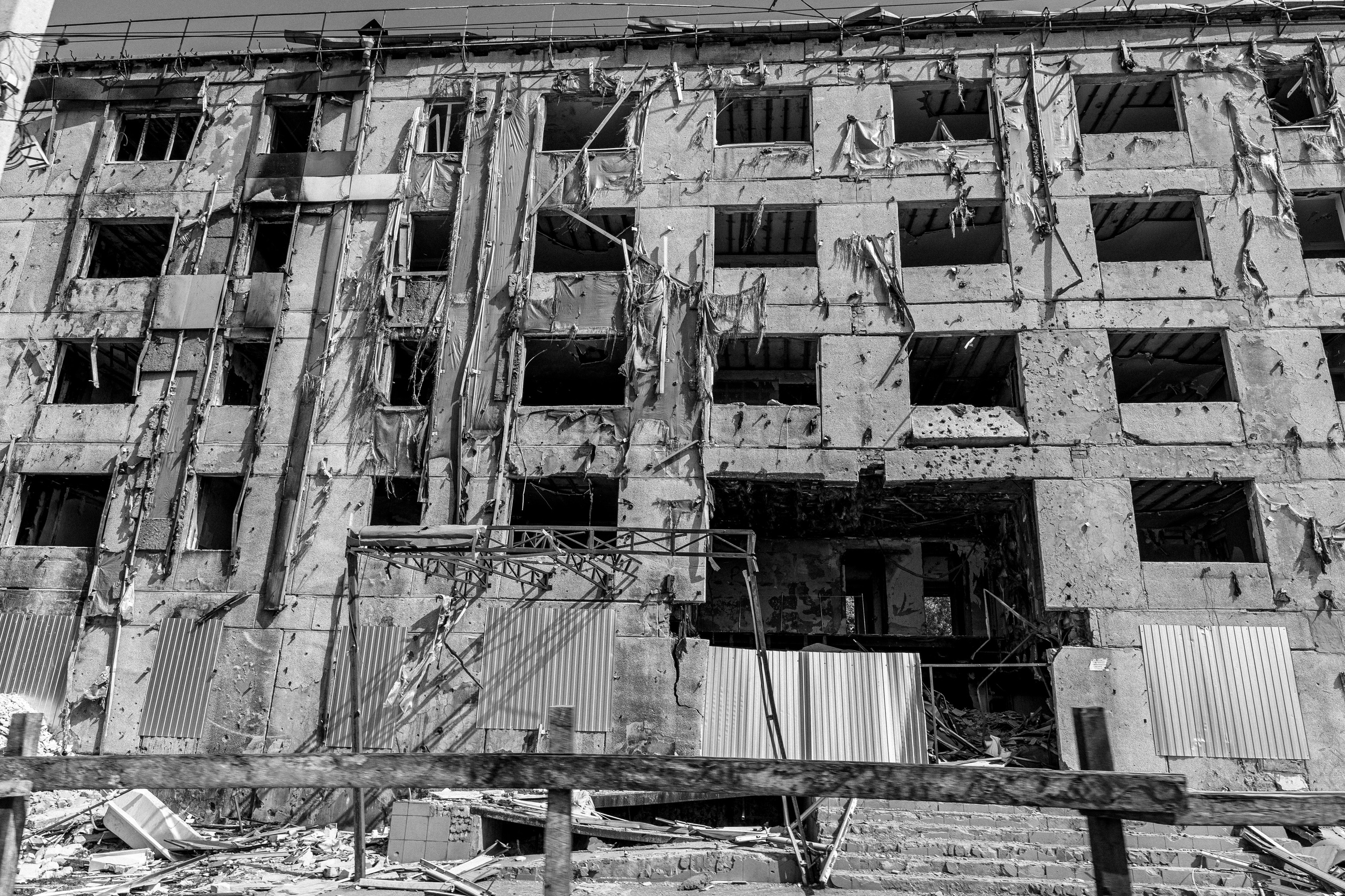At the end of April 2024, I visited the city of Mariupol as part of the synodal charity department of the Russian Orthodox Church. Community volunteers help local residents rebuild their homes and dwellings. Construction, reconstruction, revival — this is absolutely everywhere here and the noise of technology does not stop throughout the day. Our volunteer group includes men from St. Petersburg, Novosibirsk, Moscow, the Moscow region and Belarus, women from Irkutsk and Chekhov, as well as students from Moscow State University and other universities.
The guys also help with humanitarian aid — clothing, food, small equipment, medicine and other necessary things. Donations come from all over the country. In small, but very lasting and important steps, the local residents of Mariupol are receiving help and I have seen this with my own eyes.
Here and now I will NOT post photographs of already restored houses, although it is worth noting that there are very, very, very many of them in the city. Roads, especially highways, are in excellent condition almost everywhere. Stores, both grocery and clothing, operate as normal and offer a fairly wide range. Prices are lower than in Moscow. The central market is also fully operational. And what nature is like in the city — incredibly green, everything is in bloom, new parks, and the sea has become cleaner. According to local residents, this happened after the Azovstal plant stopped working.
Right now the embankment is being improved and in the near future it will be cozy, comfortable and beautiful. At this point I took my camera and went for a walk around the city to capture that part of the situation that I called “Echo…”. Further, there will be no glossy report cards, but I will repeat once again that the city looks quite good. My goal and task is “Echo…”.
This was the view from the balcony of the house where I lived. On the horizon is the Sea of Azov, and in it is a fishing boat with fishermen. The houses that are located in this area are almost completely destroyed, and in the evening, when the city lights turn on, there is just a dark spot. Further on in the article I will dwell on this part of the territory in a little more detail and retell several stories that were voluntarily heard from the mouths of local residents.
Azovstal plant
The plant itself occupies a huge area of several kilometers and is visible from almost anywhere in the city. Since the city is located on a certain hill, and the plant is near the coastal strip, its buildings, workshops and pipes are one way or another visible from many points. Of course, everything is destroyed and is unlikely to be restored. Right now this area is being guarded and the area is being cleared of mines. Fragments of shells, cartridges and bullets are still lying in large volumes along roads and untrodden places. That is why at the very beginning I was given a recommendation not to get carried away with walks on rough terrain, rubbish and off-road where paths are not visible.
MMK named after Ilyich
Not Lenin. Ilyich is a Soviet metallurgist. The plant suffered a little less than Azovstal and is now operating. Not in full, not in all workshops, but work is underway. Some say that they will try to make it as operational as possible and run it at full capacity, others are convinced that they will make a park here. Now, like all strategic sites in the city, it is well guarded. As for what will happen to him next, only time will tell.
The private sector and houses here reveal “Echo…” to the fullest.
“People live”, “Children are here”, “Civilians” — such inscriptions accompany numerous walls, gates and gates of houses. Often through traces of fragmentation grenades and bullets. Most of these homes will never be the same as they once were. There will no longer be carpet hanging on the walls because there is no longer a wall. Yes, and the carpet. There will no longer be new notches about Katya or Sasha’s height on the door frame near the kitchen. No more kitchen. Like, probably, Sasha and Katya. A beautiful amphora with flowers will no longer decorate someone’s home window sill and a random passerby will not smile when he glances out the sunny window and catches a “bunny” from it. There are no more random passers-by except me, and the dusty amphora is lying in the trash on the road.
“In our house (in the photo it’s from behind, or rather what’s left of it) they set up a mini-headquarters of the Azovtsy (recognized as a terrorist organization in the Russian Federation). I saw and heard Poles, Lithuanians and Ukrainians. From our cellar there was a tunnel to Azovstal and other places in the city. My husband and I were kicked out and our neighbors took us in, thanks to them for this. We still live with them.
Every day, regardless of the time of day, be it early morning or late evening, the “Azovites” got drunk. And then the real hell began. Some of us were put against the wall and shot around the head. With laughter. One of the neighbors was quite young — she was much less fortunate. Daily and repeated violence, ” 59-year-old Tatyana tells me.
Simultaneous tears on my face and Tatiana’s interrupted our dialogue for some time.
“Once I was at home, tidying up something and no one was there, but then I heard a noise and a man came out of the cellar—an Azov man. Blood is everywhere, dirt is stuck to clothes and weapons, all the capillaries in the eyes have burst, fingers are sticking out of one shoe, the voice is hoarse. It was very scary!” and we fall silent again for a while.
“My husband was in our house and came in to pick up something. There were also Ukrainian soldiers there. A whistle, a split second, an arrival, all the corpses. By Divine help, the husband survived, but he was completely shell-shocked and is now still in the hospital. He is 60 years old. ‘I am grateful to you, ’ Tatyana addresses everyone through me, that then it finally ended.”
Tatyana’s T-shirt symbolically depicts Chip and Dale. They are rushing to help. And just then it was the first day when workers began to clear the rubble and restore the house.
“I had 3 children — two sons and a daughter. And two grandchildren, a boy and a girl. My mother and I buried everyone under the rubble during our flights, ” a local resident, who was in the city all that time, in the private sector, tells me. And he goes deep into his area, beyond the gate riddled with debris.
“We spent 2.5 months in the basement. Women, children, old people. There was not enough food, water, strength, air, but there was patience. And now we are starting all over again. Thank you that it’s all over, ” Elena tells me with wet eyes. Her house is now being restored so that she can feel safe, calm and quiet again.
Another local resident of Mariupol, in the photo on the right. Husband, three dogs, a cat and a roof riddled with shells, and therefore leaking and blowing. Volunteers from the Synodal Department of the Russian Orthodox Church are helping to restore their roof and will finish everything very soon. Horns with sausage, borscht, vegetable salad and coffee. Seven servings. There were so many treats from the hostess for our large team.
And collective tears with smiles on their lips. It’s all over, but life goes on.
On the left side of the last photo is the already restored house, and on the right is just an example of what it looked like.
These photographs show various high-rise buildings, apartment buildings and other buildings, which are located mainly in the Central district of the city. “The construction of the century” is what many people say about Mariupol today, but the pace of restoration could have been much stronger if not for the shortage of builders. There are advertisements posted around the city looking for workers, but there are still not enough people from the former republics/CIS countries, as well as volunteers. Rumor has it that the pay here is higher than in Moscow. I haven’t checked this information myself, so I won’t vouch for it. And there is still a lot to work on here, as can be seen from my photographs.
There are quite a lot of domestic animals in Mariupol — dogs and cats. Some people have two or three dogs and a couple of cats on their private property, others have four-legged animals in their apartment, and from time to time there are quite wild, street cats and dogs. I heard several “tales” stories from various local citizens about what the animals ate and how they survived that time, but I don’t want to voice them, although I don’t doubt some of their veracity.
Despite the fact that the city seems quite empty during some daytime hours, the line of people at the social security office does not dry out. Here they receive all the help they need. They speak Russian, Ukrainian and a mixed language here. They were vigorously arguing and gesticulating about something, I did not disturb their dialogue.
Nobility without spectators. Broad gestures without cameras.
Gifts without the name of the giver and without the possibility of advertising.
To love without appropriating. Forgive without remembering.
Serve like a lighthouse in the fog. Calling at the very edge.

























































